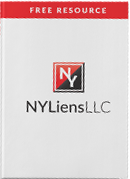We see it all the time in New York State: A construction project doesn’t go as smoothly as either party had hoped. Payments are delayed or refused. It becomes a “he said/she said” situation, and a standoff ensues. Depending on who took action first, there could be a lien on the property that is later resolved, or the contractor could have signed a lien waiver to prevent any disputes in the first place.
In this article, we explain what happens when a contractor or sub-contractor is paid on a liened property (lien release), as well as what a lien waiver accomplishes for both the contractor and the property owner.
Lien Releases
Imagine this scenario: You expect to get paid for a project, but the check hasn’t arrived yet. You filed a mechanic’s lien, but then (thankfully) you get the money you were owed from the project owner or the party responsible for paying you. What do you do now? The answer: It’s time to file a lien release.
A Release of Lien is exactly what it sounds like—you, as the lienholder, are removing or releasing the lien you held on the property you worked on because you received the payment for the project. The release also states that you are waiving your right to place any further liens on the property because you were paid for the project.
Even more, a lien release ensures that the lien is removed from county records. Despite what you may think, once you file a lien, it stays on the record books until you release it—even if you got paid or do not intend to actually enforce it.
In either case, it’s best to release the lien as soon as you receive payment or come to a settlement. Each state has its own deadline for releasing a lien, as well as its own penalties if you do not release it. Contact NYLiens LLC to understand New York’s guidelines and to avoid any possible penalties.
Lien Waivers
In our “checks and balances” society, the opposing party also has tools at their disposal. Where you, as a contractor, generate a lien release upon payment, the person responsible for paying you can generate a lien waiver. In general, a lien waiver is created proactively as a way to prevent contractors from placing a lien on the property. There are four types of waivers:
- Conditional on progress payment – This is considered the safest for claimants, and specifies that if they have been paid to date, the waiver is proof against any lien claim on the property
- Unconditional on progress payment – This unconditionally releases all claimant rights through a specific date
- Conditional on final payment – This releases all claimant rights to file a mechanic’s lien if they have been paid to date.
- Unconditional final payment – This is considered the safest for owners and releases all claimant rights to place a lien on the property.
Contact Us
When it comes to filing mechanic’s liens, you can trust NYLiens LLC to get the job done for you and help you get paid. But even after you’re paid, we can be there for you to make sure you properly release those liens to ensure your compliance under New York State regulations. If you have questions about lien waivers and releases, contact us today!
If you have any questions, you can email us at [email protected] or you may call us at 866-627-7285 or 718-444-LIEN (718-444-5436).
NYLiens LLC
Latest posts by NYLiens LLC (see all)
- 3 Signs It’s Time to File a Lien - March 20, 2019







